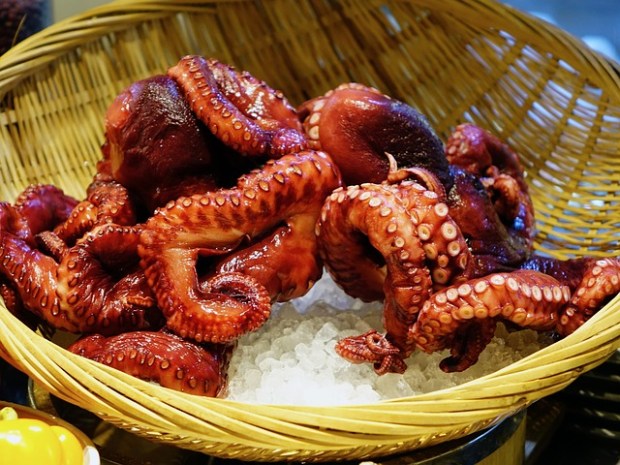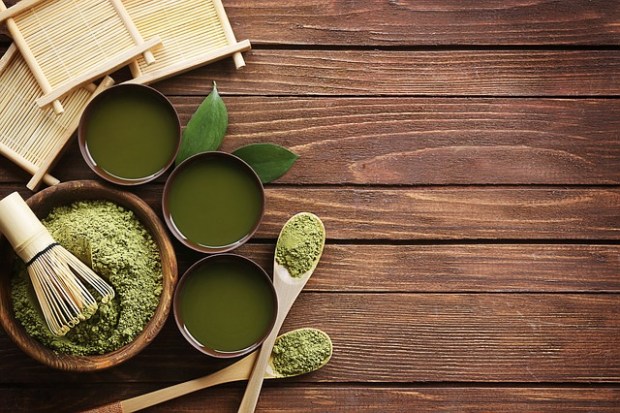
The Japanese are famous not only for their cooking, but they’re also respected for their artistic way of preparing food. Their culinary arts set them other than other countries with renowned culinary delights. Japanese Chefs and Foodists have an interest in creating new dishes. From the smallest Japanese sweets to food related events they represent their gastronomic creativity. However, the popularity of their food comes with interesting facts that might even surprise you. 
- Squid Dancing on Your Plate
If you are an adventurous foodie and have tried the world’s most exotic foods, you possibly know what odorigui is. Odorigui is the Japanese term for eating live seafood. Yes! Seafood (or sea creatures) come alive when you eat them. This dish may have iced gobies, squid or octopus. Any seafood that moves when you consume it.
One such example is the “dancing squid” that has gone viral. They call it the “dancing squid” because its tentacles move when the sauce is poured on it. Shirouo no odorigui is another example. These are live iced gobies ready to eat on your plate.
- Brain-Looking Dishes, White Pasta, and Tastes Like the Sea
One might think that shirako is an odd Japanese dish. Shirako is fish sperm served over rice. It’s like a spoonful of brains on your plate that has a creamy, rich texture and a hint of ocean flavor. It may look disgusting at first glance but many people find it delicious after trying it. This is what’s interesting about this food.
While many who haven’t experienced it find it disgusting, little did we know that they also serve it elsewhere. We just call it differently by the term “milk fish”. They put it in tuna paste in Italy and others in Europe feast on fried fish. Fish semen is not so strange as others even crave octopus and mollusk semen.
- Matcha Is Not Your Typical Tea

Matcha is probably the most popular flavor today. You can taste it in any meal, be it your main course, dessert or drink. The fresh, sweet and leafy taste is the result of the hard work of the farmers. You must be wrong if you think this plant is generally grown in tea gardens.
Matcha is ground tencha leaves. This plant is cultivated wisely to attain its premium taste. And if we say so wisely, their method of growing is very smart. So how do they do it?
The correct amount of sunlight produces premium quality matcha. Farmers do this by shading plantations with a straw framework. When grown with overhead shade, tencha leaves expand because there’s not enough sunlight to be used for chlorophyll production. It produces soft, supple leaves with a sweet taste and bright green color.
The leaves are dried using cold air to maintain their quality. Cold air is used because the amount of heat after harvest degrades the taste. Even the grinding process is very thorough. They use traditional stone grinders which are cool to the touch. All of these methods were developed in Japan. That’s the reason they deserve all the accolades of the famous matcha even although the first seed comes from China.
- Japanese Tea Ceremony
For non-Japanese nationals, the tea ceremony can mean just a normal afternoon break. It sounds like an easy snack. In contrast, the Japanese tea ceremony is a formal event. All participants are required to pay attention and do certain tasks.
The Japanese tea ceremony signifies peace, happiness and harmony. The goal is to build relationships through social interaction. This is an occasion where one should enjoy and relax. It’s as easy as it sounds, but the etiquette to follow may be stifling for some.
These are silent events that emphasize predetermined moves. Entrants must maintain a vital aesthetic and must present it with grace and wonder. Starting with a ritual where guests will walk on dewy ground as a symbol of purification. Next, they washed their mouths and hands using clean water in a stone basin for further purification.
Still breathing? Here’s more:
After the purification ceremony, they started greeting everybody and eating before pouring the tea. The course of their meal depends on how formal the ceremony is. Tools even have a certain position because the arrangement is extremely important in the ceremony. They also measure the cleanliness of the equipment. The tea kettle, tea powder container, spoon, bowl, dessert vessel, tea brazier and kettle should all be in their designated places and undamaged.
The Japanese tea ceremony is so formal that guests are ranked according to importance. Its high standard of formality includes expressions of the tea ceremony. The basis of all this? Apart from peace and harmony, it’s above all respect for each other.
- What’s Up With Bust Up Gum?
You heard it right! Bust Up Gum. The most trending Japanese candy at the moment. It is very popular amongst women because of its breast enlargement benefits. They claim it’s effective just by chewing it three to four times a day. It also claims that it is nice for blood circulation, fights aging and relieves stress.
Bust up gum contains compounds from pueraria mirifica, a plant proven to increase breast size by up to 80% according to research. Isn’t that interesting? Women don’t have to undergo expensive breast augmentation surgery. Because now, all it takes is chewing that gum.
- Roast Lamb for Dessert
Let’s be clear that this is caramel candy before getting confused. Why are they called roast lamb? Because it tastes like grilled lamb. That’s right! This Japanese candy is called Caramel Roast Lamb. The Japanese pride themselves on creating interesting treats. The reason why today’s grilled lamb is not only the main dish on the menu. But now they’re also desserts.
- Ika
There are famous chocolate treats such as chocolate-strawberry, milk chocolate, mint chocolate and so on. But the chocolate squid? Imagine how it feels. Ika is a tremendous Japanese treat which is a combination of chocolate and squid. This may not be excellent news to all chocolate lovers, but it is worth giving it a shot. The salty taste of squid and the sweetness of chocolate are potent.











